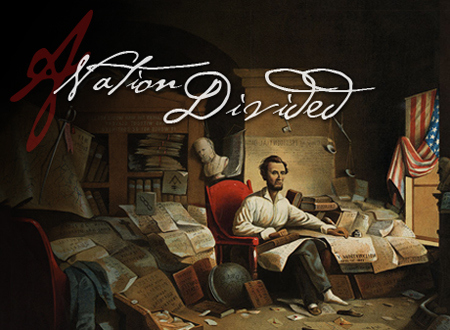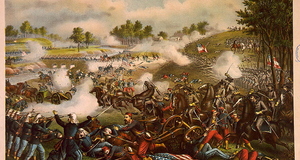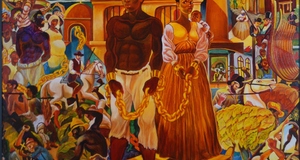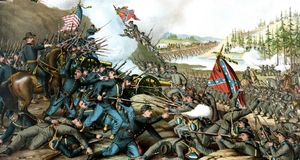Featured Article:A Nation Divided: Civil War Politics and Emancipation
By
2012, Vol. 4 No. 09 | pg. 1/2 | »
IN THIS ARTICLE
KEYWORDS
AbstractThe Emancipation Proclamation was arguably the United States’ first step away from hypocrisy and toward true racial equality. However, commentators often obscure its pivotal role in bringing the Civil War to a close by inferring that it was contrived out of benevolence and concern for the civil rights of minorities. These romanticized narratives overlook the position of slavery in the pre-Civil War economy and the use of segregation as a social control mechanism. This paper examines the content of various speeches given by the “Great Emancipator” Abraham Lincoln during his campaign and presidency juxtaposed against his more private communications. Moreover, it analyzes the indirect and ostensibly hesitant manner in which emancipation was eventually declared. Ultimately, President Lincoln employed abolition as a military necessity in order to redefine the meaning of the war and encourage freed slaves to defy the Confederacy, not solely out of regard for individual liberty. Surely, an assessment of the legislation enacted under his administration qualifies him as worthy (McColley, 2005; Wilson, 2008). However, the sobriquet infers the single-minded objective of freeing a persecuted people and ignores the volatile political climate manifested within a nation bound for self-destruction. Was he to sit in the highest office of a land wherein its citizens, all supposedly created equal in the eyes of their government, received such differential treatment? Undoubtedly, a humble man with such high regard for the law and unyielding hope for his country understood that the strength of the republic rested upon the merits of its citizens, whose fate may not be determined by birthright. Nevertheless, the romanticized narratives portraying Lincoln as savior ignore the social and political realities in which he found himself. Emancipation did not unite a people; it preserved a nation. The famous proclamation was an integral component of a desperate military strategy, not a broader civil rights initiative, which was ultimately aimed at solidifying the cogency of a seemingly impractical system of government. In perhaps its darkest hour, Abraham Lincoln inherited custodianship of the great experiment in constitutional democracy which had set a precedent for the rest of the world; a nation in which the power was bestowed upon the people rather than a dictator, divine king, or priesthood. He was charged with leading a nation that was presently attempting suicide, yet reined it back from the brink of oblivion. The situation could best be described in the words of Harriet Tubman: “[L]iberty or death: If I could not have one, I would have the other” (Zinn, 2003, p. 132). More than the philosophy of a defiant iconoclastic woman, these sentiments conveyed the state of the republic near the end of the War Between the States as perceived by President Lincoln. Either it would be a society wholly comprised of free citizens or it would cease to exist in its intended form. Economic and Racial InequalityAs the country unknowingly teetered on the precipice of internal conflict, slavery was treated with indifference by the ruling class and not yet regarded as a civil rights. Indeed, in 1857, the U.S. Supreme Court had ruled that the slave Dred Scott had no right to sue for his freedom, because he was not a person as defined by the Constitution, but mere property. Moreover, though successful in generating fear among rich whites, isolated rebellions were unlikely to prompt any lasting change (Zinn, 2003, p. 139). Why then, was the subject of slavery debated in the public sphere by members of the majority who were seemingly so far-removed from its effects? The inequality bred from slavery was not confined by ethnic borders. Rather, it evolved out of class warfare and distrust between the “haves” and “have-nots” of American society. Segregation was employed by elitists with the collateral purpose of keeping poor whites and blacks from associating, and potentially sympathizing, with one another. An example of this occurred when Irish and Negro workers were separated during the construction of the Brunswick Canal in Georgia, due to fears that an insurrection would result if the two groups intermingled. Though infrequently, poor whites would encourage and aid rebellions in retaliation against slave owners out of resentment for their own economic plight. Subsequently, Draconian police responses were initiated against whites who fraternized across racial boundaries. Eventually, a remedy was adopted wherein poor whites were employed as overseers of black labor; granting them a certain degree of perceived authority over the Negro and propagating racial tensions, while simultaneously diverting the animosity away from the owners (Zinn, 2003, pp. 132-133). Thereby, segregation was a social control mechanism employed to maintain the status quo and secure profit. Such a state of affairs is indicative of gross economic inequality, which was not confined to minority concerns of civil liberty. This conflict manifested within a socially constructed reality wherein members of marginalized groups forged alliances according to their socio-economic station, rather than on grounds of ethnicity. Slavery permitted the rich to grow ever wealthier while the poor toiled grudgingly, unable to compete in a market dominated by cheap labor and business interests. Only through the abolishment of slavery would upward social mobility become accessible and a viable middle class eventually materialize in the Land of the Free. As Frederick Douglas said, “What man can make, man can unmake.” Consequently, President Lincoln appealed to the needs of businessmen and ambitious politicians in such a way that the slavery issue could be resolved; not by rebellion, but on terms established by the white majority (Zinn, 2003, pp. 135-139). Moreover, he could simultaneously please the emerging and politically active middle class; a demographic with whom he shared mutual empathy (Gienapp, 2002, p. 24). Personal Sentiments and Political RealitiesLike most men of his time, Lincoln did not necessarily regard blacks as equal persons. As a congressman in 1849, he proposed a resolution to abolish slavery in the District of Columbia, but included a mandate requiring local authorities to arrest and return fugitive slaves to their owners. During a Senate campaign speech given in Chicago, Illinois in July of 1858, Lincoln vehemently professed the ideal of a free nation wherein all men were created equal and treated as such. However, two months later in Charleston, South Carolina, he proclaimed that he was not, nor had ever been, “in favor of bringing about…the social and political equality of the white and black races.” He supported the racial dichotomy of “superior and inferior” and was “in favor of having the superior position assigned to the white race.” Subsequently, a common theme in his approach to abolition was to free the slaves and encourage their emigration to foreign countries (Zinn, 2003, p. 140). Contemporary pundits would certainly regard such statements as thinly veiled hypocrisy. Nonetheless, one must understand the climate of pre-Civil War politics. It is unreasonable to suggest that any one set of principles would have sufficiently garnered support for a single candidate therein. Consequently, diverging opinions regarding slavery prompted the Northern and Southern factions of the Democratic Party to elect their own respective candidates for the 1860 presidential election; Stephen A. Douglas and John C. Breckenridge (Gilmore, 2006). Lincoln offered insight into his own personal revulsion of slavery when he declared that “If slavery is not wrong, nothing is wrong.” However, he trusted in the law to prevent his personal beliefs from unduly influencing his political decisions and revealed the reality of his time by admitting that his Presidential authority did not grant him “an unrestricted right to act officially on this judgment and feeling” (Brands, 2009). Accordingly, Lincoln conceded that he would support an extension of slavery, just as he “would consent to any great evil, to avoid a greater one” (Gienapp, 2002, p. 52). To him, the greater evil was the specter of a divided nation. President Lincoln did not approach the beginning of his tenure with the intention of pursuing emancipation. He affirmed in his March 1861 inaugural address that he would not interfere with the institution of slavery, citing his lack of lawful authority and personal inclination to do so; a stance parodied by Congress at the outset of the war. However, he wavered on this position so as to keep several slave states in the Union. This illustrates a perpetual and methodical assessment of political pressures from the radical elements of his weak coalition (Zinn, 2003, pp. 140-141). These fluctuations were exploited by Frederick Douglas when he described the President’s first years as unashamedly promotional of the welfare of the white majority and apathetic toward the rights of Negros (Brands, 2009). Regardless of Lincoln’s attempts to appease, seven Southern states succeeded from the Union following his election to the Presidency. Convinced that diplomacy was temporarily impotent, he attempted to repossess the federal base at Fort Sumter, prompting the succession of four additional states (Zinn, 2003, p. 141). The Civil War had begun. Mediating Internal ConflictThe War Between the States was not declared solely on the subject of slavery. However, many Union soldiers reasoned that only abolition could end the war and prevent similar conflicts from manifesting in the future (Manning, 2012). It is quite possible that Lincoln may never have broached the issue had it not become such a divisive topic and the military viability of the North not become so uncertain. Still, he did not approach emancipation from a civil rights perspective. Rather, he perceived it as a cogent method by which he could hasten an end to the conflict and ameliorate his country (Brands, 2009). His concern was not for the plight of a particular minority, but for the implications inherent to fostering an equal society so blatantly hypocritical. More importantly, he realized that acquiescence would have harmed his credibility and perpetuated the slow death of his beloved Union. Without emancipation, the nation could not have survived in its intended democratic form. Subsequently, other marginalized peoples would have been increasingly hesitant to follow the American model by adopting individual liberty as a fundamental maxim. The Confiscation Act of 1862 set the precedent for what would eventually evolve into the Emancipation Proclamation by granting freedom to all slaves fighting for the North. However, the law was not enforced by military commanders; a trend which the executive branch regarded with indifference. Even under pressure to increase enforcement, Lincoln made no such maneuver. Instead, the Confiscation Act served to quell the dissenting opinions of radical abolitionists without sacrificing his popularity among moderates. In a letter response to a critic concerning the administration’s impassive position, the President retorted that his “paramount objective…is to save the Union…not either to save or destroy Slavery.” He elaborated that if possible, he would save the Union without freeing a single slave as readily as he would by freeing every last one (Zinn, 2003, p. 142). He cared only for the future of his nation. What Lincoln did not reveal in this letter, was that he had already drafted a preliminary emancipation order which was being deliberated among the members of his Cabinet (Brands, 2009).Continued on Next Page » Suggested Reading from Inquiries Journal
Inquiries Journal provides undergraduate and graduate students around the world a platform for the wide dissemination of academic work over a range of core disciplines. Representing the work of students from hundreds of institutions around the globe, Inquiries Journal's large database of academic articles is completely free. Learn more | Blog | Submit Latest in History |



















